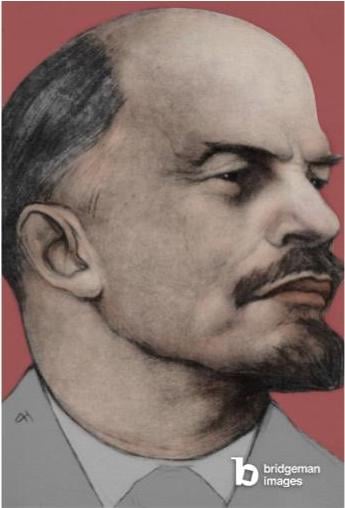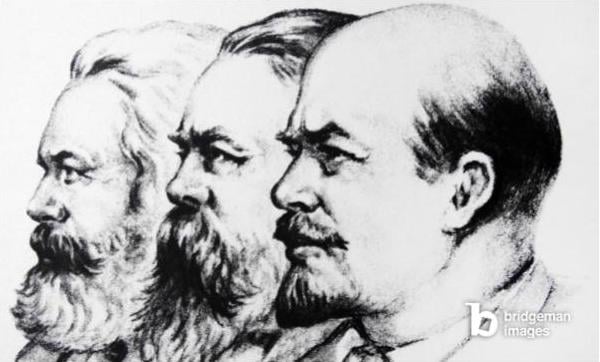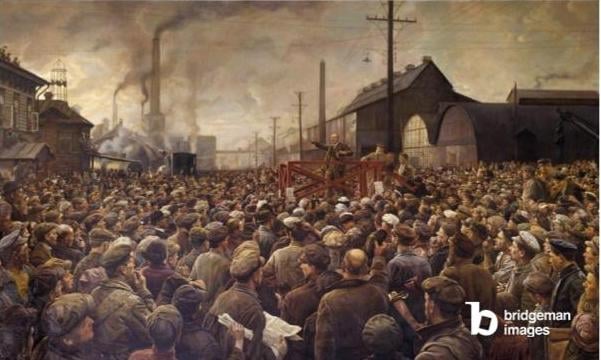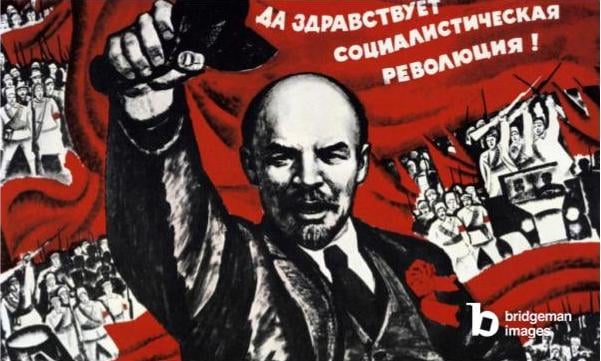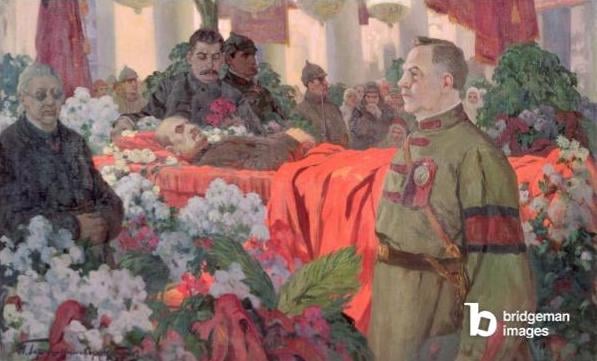%20Russian%20revolutionary.%20Undated%20Communist%20poster%20%20Universal%20History%20ArchiveUIG%20%20Bridgeman%20Images.jpg)
Vladimir Lenin and his mark on Russian history
Few figures loom as large in the consciousness of the 20th century as Vladimir Lenin. In life, Lenin led a movement that would change the nature of international politics, and in death, he became the subject of a powerful personality cult; reproductions of his image and likeness appropriated far and wide by the opponents of the capitalist West. Ultimately, he is a figure who transcended his time, leaving an indelible mark on both Russian and global political history.
Like many young socialists, Lenin was first exposed to leftist ideology at university. Soon after their father died of a brain haemorrhage, the young Lenin and his brother Alexander began to associate themselves with anti-government factions. Alexander was involved in instigating political agitation against the Tsar and introduced Vladimir to banned and anti-government writings, for which he had a ferocious appetite. In 1886, Alexander joined a revolutionary cell intent on assassinating the Tsar, but they were sentenced to death once they were discovered.
Within a year, Vladimir had lost his father and brother. This trauma steeled him in his political resolution and desire to honour his brother’s legacy; his ideology grew ever more radical, so much so that his university expelled him. This, however, only served to fan the flames of his radicalism. He read Marx voraciously and aligned himself with the idea that society’s development is delivered through class struggle.
In 1893, Lenin moved to St.Petersburg and began his political career in earnest, working for a variety of radical-left groups, activists, and politicians. He wrote and published widely, which, though it was met with mixed reception, brought him his first public recognition. Importantly, during this period, he articulated his theory that the rise of industrial capitalism had caused large numbers of peasants to emigrate to cities, where they had formed a proletariat. Following Marxist theory, Lenin argued that this proletariat class would develop class consciousness, which in turn would lead to revolution and the violent overthrow of Tsarism and the aristocracy. His activities did not go unnoticed. in 1897, he was trialled for descent and exiled to Siberia for three years.
Eventually, his reputation as a political force grew to the point when he no longer felt safe in Russia. So, he fled to Munich, London and Geneva. From afar, and with the help of other important Marxist figures, including Leon Trotsky, he grew the Bolshevik movement. It was only in the aftermath of the 1905 revolution, when anti-Tsarist sentiment was increasingly popular, that Lenin felt he could return to Russia.
Henceforth, Lenin became a central figure in the revolutionary vanguard of Russia’s socialist contingency. He advocated for violence and robbery against the ruling classes, and broke from traditional Marxist theory, arguing for an immediate proletariat-led revolution.
When war broke out in 1914, Lenin was still abroad, and there he would remain for much of the conflict. In 1917, as the Russian war effort failed and revolutionary Leninism swept Russia, Tsar Nicholas II abdicated. The Revolution saw the Bolsheviks taking control, with Lenin returning to Russia to lead them. In the years that followed, despite ailing health, he established Russia’s first Soviet government and changed the nature of the country’s politics forever. However, he did not live long enough to see what was to become of his revolution. Lenin died on the 21st January 1924. His funeral took place the following day in Moscow’s Red Square, where his corpse was displayed to the public. The special Lenin mausoleum remain Lenin’s tomb to this day, where he is forever martyred as the patron saint of Communist Russia.
See more images of Vladimir Lenin

